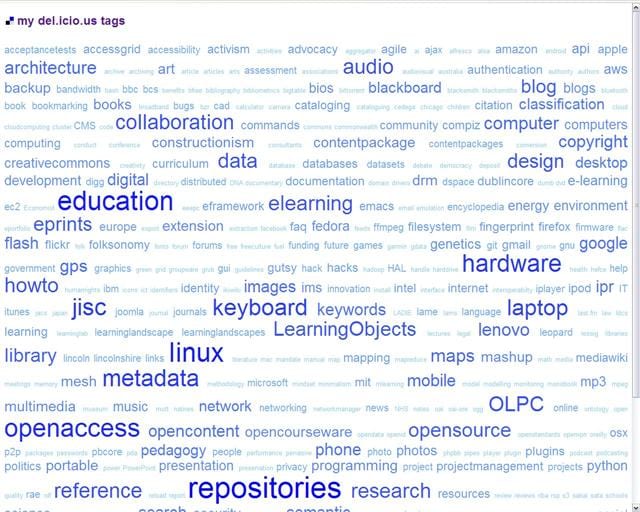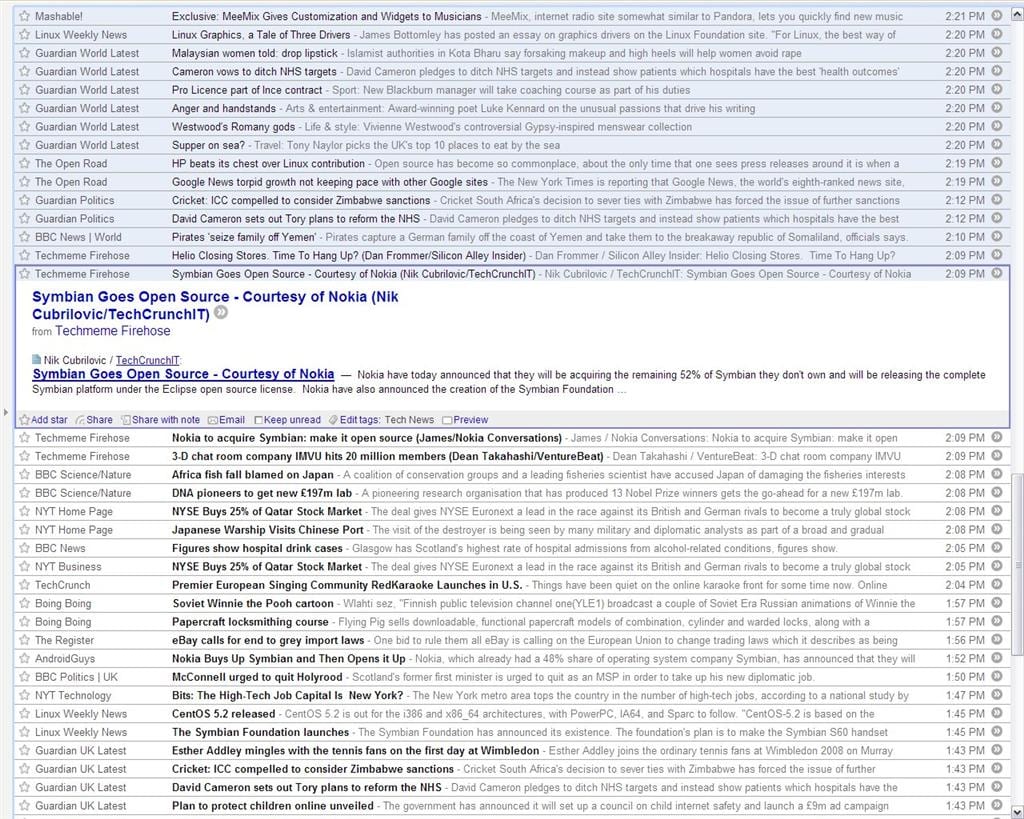Carrying on from the morning’s Web 2.0 session, in the afternoon I attended a session on how social networking tools are being developed for and integrated into repositories.
Jane Hunter, from the University of Queensland, discussed the HarvANA project, a system which supports and exploits repository users’ tags, comments and other annotations through the development of separate collections of user contributed metadata. It seems like an interesting and ultimately useful idea, acknowledging the ‘added value’ that user annotations can make to repository objects. Significantly,users can annotate sections of text, images and other media, allowing annotations to be created for parts of the repository object, rather than just the whole.
David Millard, from The University of Southampton, presented the Faroes project, a development of EPrints for teachers wishing to deposit learning resources. He said that their experience on previous projects had shown that users were not interested in nor required content packaging standards and that repository user interfaces needed to provide similar functionality to other repositories such as Flickr and YouTube. Their project aims to provide a simple, attractive interface to EPrints (called ‘PuffinShare’) aimed at teachers sharing documents, images and other single files (or ‘learning assets’), rather than packages of learning objects. It looked like a great project, highlighting some of the challenges we’ve faced on the LIROLEM project and one which I think we would be interested in trying. A public beta is due this summer. He pointed out that the growth of Web 2.0 is due to the popularity of personal services (Flickr, YouTube, Delicious), which also have an optional, additional social value to them, too.
Carol Minton, from the National Science Digital Library, discussed the work they have done on embedding Web 2.0 applications such as MediaWiki and WordPress, into their repository service. Essentially, they have created services that link blog articles and wiki pages to repository objects, enriching the objects with these community ‘annotations’.

